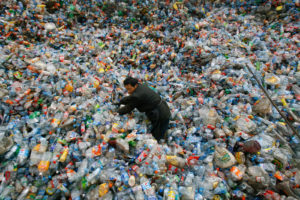Bioneers Experience Both Personal and Profound
By Gabriela Estrada and Kassie Munro, Program Managers
Gabriela Estrada (left) and Kassie Munro (center) at Bioneers. Photo by Santa Cruz Permaculture
Though there are many conferences out there, few present a balance between seemingly opposing concepts: the old and the new, the indigenous and the futuristic, science and spirit, and even fewer invite us to look deep back to the past and far into the future. Bioneers does just that. While shifting one’s focus to all of these different directions can make one’s head spin, in the end it becomes clear that considering all of these viewpoints is necessary to create the world we want to live in tomorrow. After all, to be pioneers of a better future, we must also be historians of our planet’s storied past.
Bioneers is an innovative nonprofit organization that highlights breakthrough solutions for restoring people and planet. Founded in 1990 in Santa Fe, New Mexico, by social entrepreneurs Kenny Ausubel and Nina Simons, Bioneers acts as a fertile hub of social and scientific innovators with practical and visionary solutions for the world’s most pressing environmental and social challenges.
This 30-year-old event showcases a variety of speakers including authors, artists, scientists, Native American leaders and activists, and youth activists all ready and inspired to create a new world that works for everyone. They aim to create a “revolution from the heart of mother nature.” The conference was a combination of music, youth leadership, art, activism, social justice, environmental education, women leadership, ecological medicine and environmental conservation.

The conference began early on Friday morning with a drumming set and a performance by Climbing PoeTree, which immediately marked the tone of the next three days — a celebration for mother earth. It was difficult to choose only one workshop for each of the allotted time periods. How does one possibly choose between a conversation with Stuart Muir Wilson about Permaculture & Ecological Social Justice, an earth connection herb walk, a panel titled The Ground Beneath Our Hearts, among so many others? As we had an opportunity to connect with other attendees, it became clear that we were not alone in this dilemma, battling the constant fear of missing out on something important in another workshop. To the best of our ability we very purposefully divided up the workshops that were of most interest to not only us, but to the organization and the work we do at Sustainable Solano.
Fortunately the Bioneers organizers had guiding themes for each day which helped us to focus in on key messages and walk away from each day with tangible insights.
Here are some reflections on our favorite speakers from each day:
Day 1: Grief, Love and Power of Independent Media
Kassie: Terry Tempest Williams gave an enlightening talk about erosion to start the morning, not only as a powerful force in nature but as an alarming reality in America today. She urged us not to turn away from the devastating erosion we are witnessing to our democracy, science, compassion and trust — but to think of it as a force of evolution and creation rather than destruction and undoing, as we see it happen in nature when the elements create some of our most treasured natural wonders through forces of erosion, like the Grand Canyon. She instilled a mood of hope for what the future could look like, which is so important to keep alive in challenging times.
Gabriela: My favorite speaker of the day was Jerry Tello, who reminded us that stories are powerful reminders of the things we forget about ourselves, and that the work we do is healing — as such we need to remember the sacredness of us and that when those who hurt us heal, we heal. After his talk, not one eye was left dry. His incredible ability as a storyteller reminded us that we need to be grounded in the work we do because it is so much bigger than ourselves.
Day 2: Climate Justice and Resilience
Kassie: Saturday had a number of standout speakers for me. As a fan of both Bill McKibben (co-founder of 350.org) and Paul Hawken (author of Drawdown), it was exciting to hear them speak in person and embody their action-oriented, revolutionary, yet practical, vision for the future of our country and how to get there. I was also surprisingly moved by Valarie Kaur and her Revolutionary Love approach to transformation, likening the revolution needed in our world to that of childbirth and urging us to view labor as a form of love. All of these speakers reminded me that there is a path forward to a world that works for everyone and to stay dedicated to working toward that vision.
Gabriela: On Saturday I was captivated by a panel talk on Building Resilience in a Climate Changing World. The panel spoke about projects and strategies that have been deployed in our coastal, rural and urban communities in an effort to increase resiliency in those communities. They invited us to think about reversing climate change, not stabilizing it, and to make the climate change crisis message reliable to create collaborative solutions.
Day 3: Regeneration
Kassie: On the last day of the conference, I was thrilled to see Demond Drummer as one of the final keynote speakers. Demond is the co-founder of New Consensus, a nonprofit that helped drive the creation of the Green New Deal by supplying research and policy proposals to the deal’s political advocates. After two days of discussion centered on all of the systems-level changes that are needed in our country, it was extremely inspiring to hear from someone who is driving this work at the highest level. It can be so daunting and overwhelming at times to dive deep into all the challenges we are facing as a nation and as a planet, so to learn about his work advancing these ideas and values toward national-level action was a wonderful message to end the conference on. While we may not be able to change everything we would like to, that should not deter us from driving forward the things we can.
Gabriela: Sunday’s workshops focused on cultivating a culture of regeneration, from hearing Casey Camp-Horinek (councilwoman of the Ponka Tribe of Oklahoma) about the story of interconnectedness to a panel about Bridging Divides: Co-creating a Culture of Belonging. What stood out to me about this workshop was the new model that the panel speakers proposed: To move forward we need to create a model that would bridge the many divisions and polarizations that divide us. We need to create a culture of belonging.
It’s difficult to express in writing how powerful and moving these speakers were, so luckily you can find some of the keynotes here if you would like to listen for yourself.
Attending Bioneers for the both us was a tiring and intense experience, yet a very interesting one. The conference offered a space to learn from each other — from seeing art inspired by the environmental movements we are a part of to connecting with like-minded individuals from all over the country and the world.
The enormity of the conference and diversity of the topics covered felt a bit overwhelming at first, but in retrospect underscores a unique element of the conference — no two people will have had the same experience. You can feel this energy everywhere at Bioneers: that we are all here together yet every individual is living their own personal experience and that is what makes this complex world so dynamic and beautiful.
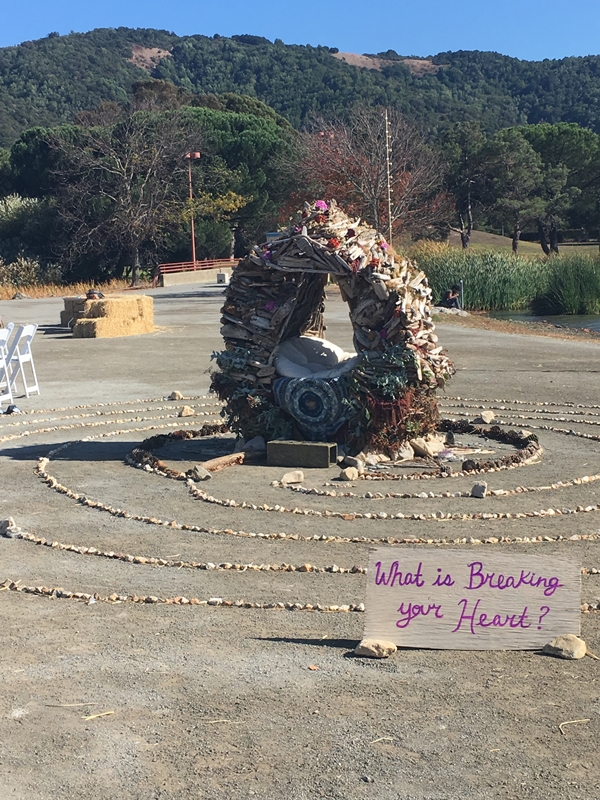



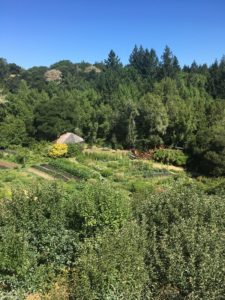 The course itself was both incredibly rigorous in its training, and yet at times also felt remarkably like summer camp. Nestled in the lush Duck Bill Creek watershed of Western Sonoma County, the property boasts a number of incredible gardens, restored forest and grasslands, an irrigation pond (which doubles as a swimming hole), and countless trails to get lost on. Communal vegetarian meals cooked in the shared kitchen with ingredients from the gardens were shared three times a day.
The course itself was both incredibly rigorous in its training, and yet at times also felt remarkably like summer camp. Nestled in the lush Duck Bill Creek watershed of Western Sonoma County, the property boasts a number of incredible gardens, restored forest and grasslands, an irrigation pond (which doubles as a swimming hole), and countless trails to get lost on. Communal vegetarian meals cooked in the shared kitchen with ingredients from the gardens were shared three times a day.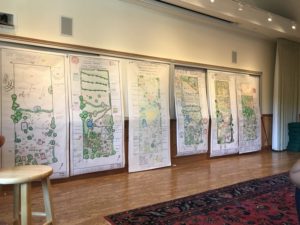 The course culminated in a group design project, which for us focused on a nearby 7-acre plot of land that had recently been acquired by the Cultural Conservancy. Indigenous wisdom and learning the heritage of our host land was a focal point of the training. This came in many forms: first a small presentation by The Cultural Conservancy, then a trip to the actual site in the city of Graton, which is Southern Pomo Coast Miwok Territory. During this site visit, we all took notes, pictures and asked members of the Cultural Conservancy what they envisioned for the space to better understand their hopes and aspirations for the place. As a group, we were grateful that we were allowed to participate in a project that aims to create an inter-tribal bio-cultural heritage farm and indigenous education center. Together in a team of five, we created designs that represented all the different topics we were taught, and then on the last day presented it to the Cultural Conservancy.
The course culminated in a group design project, which for us focused on a nearby 7-acre plot of land that had recently been acquired by the Cultural Conservancy. Indigenous wisdom and learning the heritage of our host land was a focal point of the training. This came in many forms: first a small presentation by The Cultural Conservancy, then a trip to the actual site in the city of Graton, which is Southern Pomo Coast Miwok Territory. During this site visit, we all took notes, pictures and asked members of the Cultural Conservancy what they envisioned for the space to better understand their hopes and aspirations for the place. As a group, we were grateful that we were allowed to participate in a project that aims to create an inter-tribal bio-cultural heritage farm and indigenous education center. Together in a team of five, we created designs that represented all the different topics we were taught, and then on the last day presented it to the Cultural Conservancy.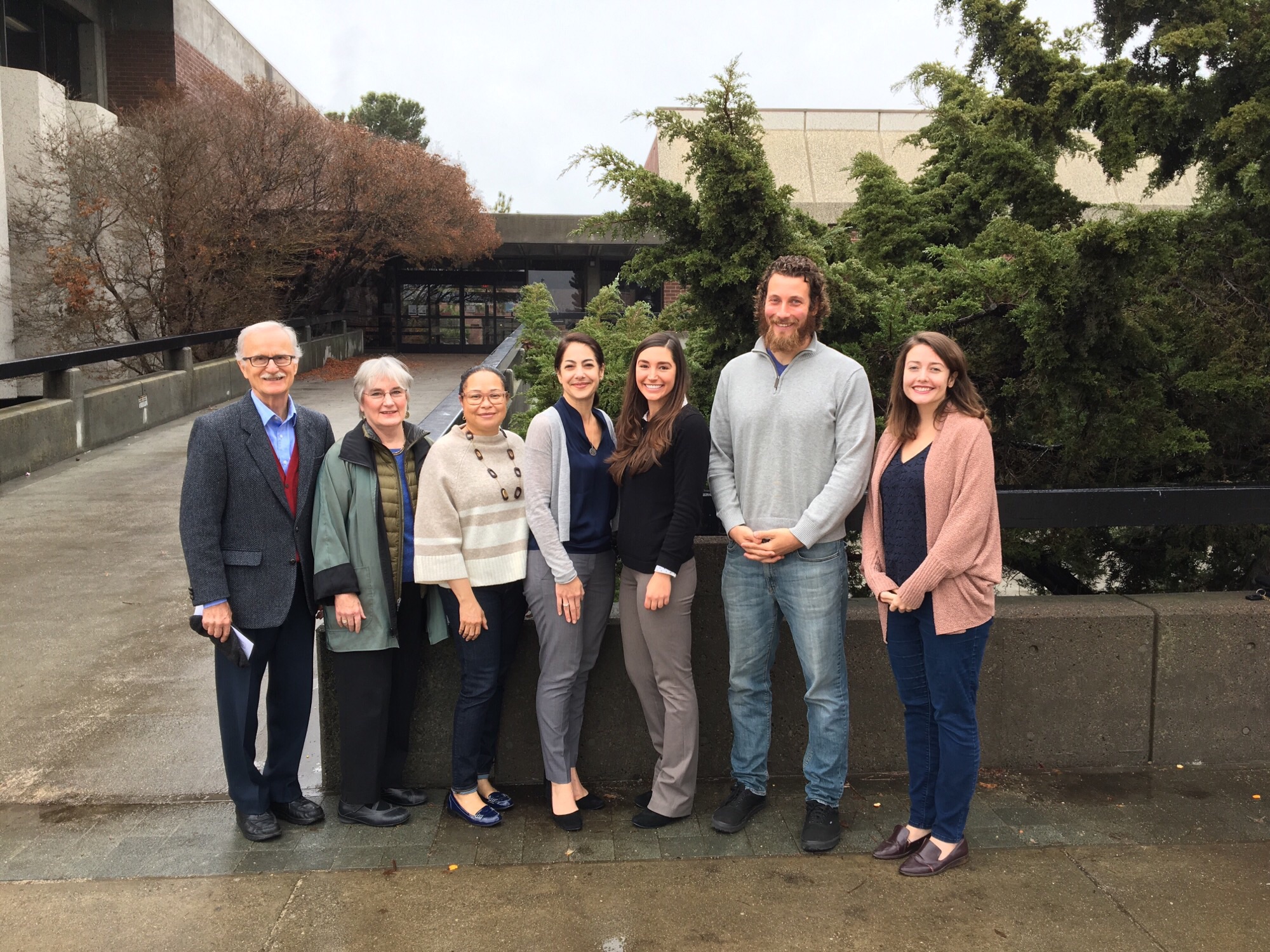
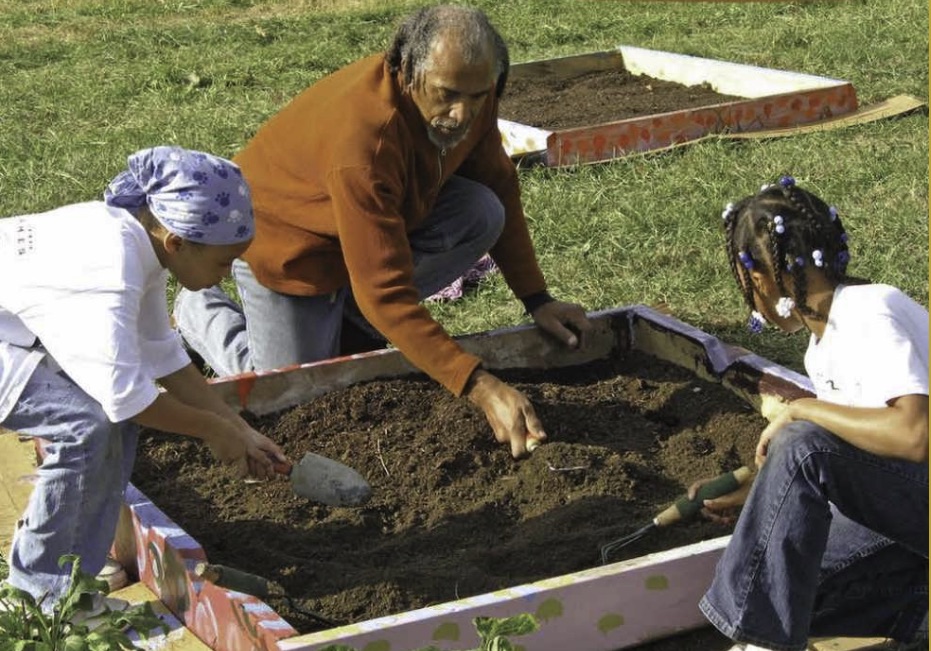
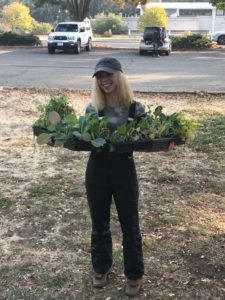 The Shalom demonstration food forest installation wrapped up Saturday. This was phase one of a larger goal to create a community garden in Vacaville. The past few weeks have been incredible community events, but the devastation of the fires and shootings weigh heavy on my heart. In spite of the smoke, people showed up and as a team we installed the Shalom garden. In spite of the fear of violence, Pastor Sue and husband Jim opened their home and served lovely meals. The fair share ethic in permaculture was embodied on these Saturdays:
The Shalom demonstration food forest installation wrapped up Saturday. This was phase one of a larger goal to create a community garden in Vacaville. The past few weeks have been incredible community events, but the devastation of the fires and shootings weigh heavy on my heart. In spite of the smoke, people showed up and as a team we installed the Shalom garden. In spite of the fear of violence, Pastor Sue and husband Jim opened their home and served lovely meals. The fair share ethic in permaculture was embodied on these Saturdays: